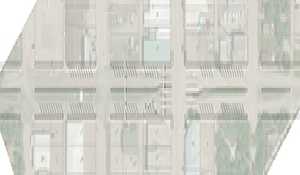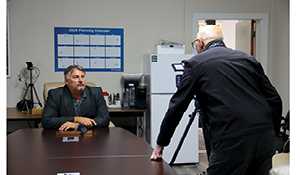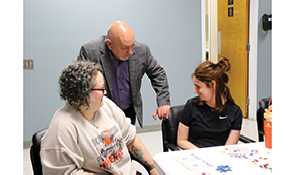SHA preparing for a return to the ice
June 19, 2020, 5:06 am
Rob Paul, Local Journalism Initiative Reporter


When the hockey season was prematurely ended on March 12 by Hockey Canada, it sent shockwaves through the country. The cancellation of remaining hockey seasons and rink closures made the Covid-19 pandemic feel more real for many Canadians when it took away their most beloved sport.
A little over three months later, Hockey Canada is taking steps towards a return to the ice by putting the power into each provinces’ hands to make a decision on when hockey activities can resume.
On June 4, in a press release, Hockey Canada CEO Tom Renney and President/COO Scott Smith announced a return-to-hockey process in Canada.
“On March 12, the decision was made to cancel all Hockey Canada-sanctioned activities across the country. This was a difficult decision, but one made to maintain health and safety of all participants and the general public amid growing concerns around the coronavirus (Covid-19) pandemic.
“Currently there are no Hockey Canada-sanctioned activities being conducted, and we are working with our members on their return-to-hockey plans. After ongoing discussions with the board of directors, our chief medical officer, the 13 members and public health authorities across the country, it has been determined that the best approach for a return to hockey in Canada is to allow each member the opportunity to work with authorities in their respective regions to determine when it is safe to return to the ice in areas that fall under their jurisdiction. We expect the timing of each member’s return to hockey will be different, but will be based on the advice of their government and public health authority.
“It is imperative to note that we are not ready to return to the game across the country. As we have seen in respect to flattening the curve, the impact of the pandemic varies from region to region. Permitting our members the opportunity to decide on an appropriate return-to-hockey timeline will allow them to work directly with public health authorities to determine when it is safe to return while also implementing specific safety measures and rules within their associations and leagues.
“Hockey Canada knows the game will look quite different, and the return will happen at different speeds and at different times across the country. Be assured, we continue to work on our multi-faceted return-to-hockey plan that includes health and safety regulations, communications and seasonal structure. As with so many people across the country, we look forward to returning to the game when it is safe to do so, and we will support our 13 members as we continue to work towards getting back on the ice.”
Although this is progress towards getting back to hockey, Saskatchewan Hockey Association (SHA) GM Kelly McClintock says, this was more of a situational move to allow provinces to individually asses their situation.
“The reality is, it’s not like they’ve lifted the ban,” he said. “Hockey Canada is really the 13 branches of Hockey Canada and the staff of Hockey Canada. We’ve been working pretty closely with this. When we all made a decision on March 12 to go out as one group, we really felt at that time we would come in as one group.
“After a month of daily calls, it became apparent because of how Covid-19 was hitting various regions of the country we wouldn’t be able to come back all as one. That’s really why this decision was made.
“Right now, Hockey Canada isn’t sanctioning anything within Hockey Canada until September 1. They’re giving us the ability if we so choose, but they’re giving us the minimum guidelines of return-to-hockey that we have all been a part of in producing and approved. Then you work with your provincial government and health authority.”
Until a date for a return to indoor sports is set by the Government of Saskatchewan, McClintock says everything will remain up in the air.
“Right now we’re in the midst of calls,” he said. “We’ve had six so far—going by zones—and we’re telling them we’re not going back to hockey until the provincial government and Sask Health lay down the guidelines. Arena’s are not supposed to open until Phase 4.2 now and we don’t know what that date is, but we also don’t know what the conditions are going to be. Those are important things that we feel we want to have a say in.
“It’s really probably going to hit—I wouldn’t say so much minor hockey—junior hockey where they need to have bums in the seats in order to make money. There’s a group involving the WHL, SJHL, and ourselves that will hopefully have a conversation with Sask Health in the next two weeks and lay out what we’d like to see, but we’d also like to know what guidelines they’re thinking about for when we get back to playing hockey.”
With the way Saskatchewan has handled the Covid-19 pandemic, McClintock is confident if communities keep up their efforts, hockey will be back sooner than later.
“I’ve been telling our members that I can’t give definitive answers of what it’s going to be like,” he said. “I said they’re seeing all kinds of things on social media and reports in papers and it’s all great to speculate, but until we actually find out—if we go along here like we have been in the last week or so over the next month, then we could be sitting pretty good, but if all of a sudden people have too much false sense of security and we see some bigger groups getting together and more cases coming out then it’s just going to be worse for us.
“If we keep going the way we are, I can see us maybe starting in September and them maybe having more relaxed rules for what it would be within an arena than what I suspect. A month ago I was saying we might not be able to play until November and at that time we’re wondering if we can use dressing rooms, have kids on benches, and those types of things. Now, I’m thinking if we have another month of what we’ve had here then it’s going to be a much more positive outlook.”
Hockey Canada has released a document on their return-to-hockey protocol that gives some idea of what hockey could look like once it returns, but McClintock says each individual community is going to need to do their part.
“Hockey Canada has quite a few (protocols) they’ve addressed,” he said. “Just about cleaning equipment, water bottles, hand washing, all of those kinds of things. We’ve even addressed on our website teams taking busses and what they’ll have to do and even maybe persuade teams not to have as many overnight trips and certainly not eating at buffets. There’s that, but when it comes down to the actual physical arena, that’s the thing that we’re not yet aware on.
“When I’ve been meeting with our members, I’ve been advising them that if they haven’t already talked to their local municipality about what they have heard, or if they’ve contacted SUMA or SARM, or talked to local government about what an indoor facility will require. Will they require more staff? More cleaning supplies? A more rigorous cleaning schedule? And that all depends on if the town/village runs the arena, will they have to hire more people? Or if it’s run by a recreation group of volunteers and it’s all volunteer run.
“Every community is different, but I told them they have to check. Make sure they go to their town council, or whoever, and ask if they’ve looked into it and if not they need to so they can be prepared for when we come back. I would say the majority of our hockey rinks don’t open until maybe October 1—there are a lot in September, but the majority aren’t opening up until October. I look at that and see that we’ve still got time here.”
There’s still plenty that needs to be hashed out before a return is possible, but McClintock says Hockey Canada is doing everything to help make that return as smooth as possible.
“I’m really proud of what Hockey Canada has done,” he said. “There’s 13 branches of Hockey Canada—one in every province and three in Ontario. Their motto is, ’13 plus one equals one.’ There might be 13 branches, but we’re all in this together. They’ve been real leaders. We’ve had nine different groups with four task teams and five work groups on various topics. We’re looking at things like how to address regulations. For example, can teams travel between provinces? That depends. Should we have a chief medical officer to consult if a team wants to travel? If a team from Moosomin wants to go to Winnipeg and they apply for a travel permit? I’m saying no. Or if a Winnipeg team wants to come to Regina? No. But what if a Moosomin team wants to go to Virden? I want a chief medical officer to help make that decision. It really depends on areas.
“We looked at regulations, return-to-hockey protocols, if we can do coaching and officiating differently, and Hockey Canada has engaged a third-party vendor to do some surveys of our membership across the country to get their feedback on how comfortable they are. We’re also looking at how to promote the game better and promote safety, and how to make people more secure in coming back to play.
“As I said to our membership, there’s always a rural vs. urban perspective,” he said. “In Regina or Saskatoon—a large centre—you see a lot more layoffs, physical distancing requirements, that kind of stuff. In a lot of rural settings people are doing what they should be doing, but I don’t think there’s as much fear of it. They have a different perspective on it because they don’t have anything in the area and they’re ready to play hockey. But when we start moving around that’s when we potentially start seeing things happening. I’m hoping some of the summer sports are ready to play so we can see some of the results there.”
Despite the Covid-19 crisis being a negative situation, McClintock does see some positive long-term impacts coming out of it.
“Where I see the long-term impact is, at times we don’t have to travel to meet in person,” he said. “People are getting used to running virtual meetings—for a little over two months that’s all I was doing. That’s one change from this.
“I’ve really encouraged my staff—if you go on our website we’ve had some virtual goaltending presentations, skating, skills development, developing defensemen—so I think there’s going to be a lot more virtual learning when it comes to coaching and officiating development.
“My youngest son is in grade 12 so he’s been doing virtual learning and both my boys are going to university in the fall and that’s all going to be virtual. At some point, the new generation coming up is going to be used to that, so we better incorporate it and use those platforms and they can do it at more of their leisure. It’s important we look at those things.”




























SM.jpg)






